
The orange threadtail or ochre threadtail is an Australian damselfly in the family Platycnemididae. They are medium-sized with a length of around 35mm. Orange threadtails can be found near semi-shaded running water, and usually rest on plants at the water's edge. Orange threadtails may be seen all year round. In Victoria they occur at lower altitudes during summer, though further north they can be seen in spring and autumn. When at rest, Nososticta damselflies hold their wings closely folded up vertically over their thorax. The male threadtails have an orange-yellow thorax with black patterns. Their abdomen is narrow, black in colour with yellow strips. There is a brown yellow colour at the base of their wings. Females are the same size as the males. They are pale brown in colour and have the same black patterns as the males.
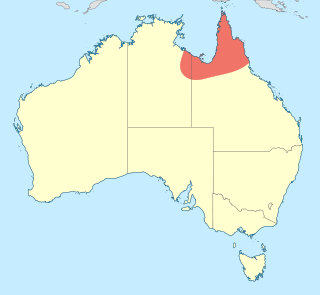
Austrosticta frater is a species of damselfly in the family Isostictidae, commonly known as a eastern pondsitter. It has been recorded only from northern Queensland, Australia, where it inhabits ponds and possibly streams.

Diphlebia lestoides is a species of Australian damselfly in the family Lestoideidae, commonly known as a whitewater rockmaster. It is endemic to south-eastern Australia, where it inhabits streams and rivers.

Lestoidea brevicauda is a species of Australian damselfly in the family Lestoideidae, commonly known as a short-tipped bluestreak. It is endemic to north-east Queensland, where it inhabits streams in rainforest.
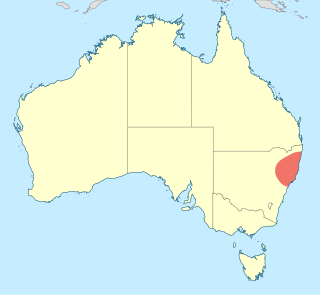
Austroargiolestes brookhousei is a species of Australian damselfly in the family Megapodagrionidae, commonly known as a Barrington flatwing. It is endemic to northern New South Wales, where it inhabits streams and bogs.
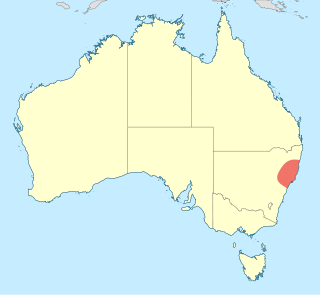
Griseargiolestes bucki is a species of Australian damselfly in the family Megapodagrionidae, commonly known as a turquoise flatwing. It is endemic to the Barrington Tops area of New South Wales, where it inhabits streams, bogs and seepages.

Griseargiolestes griseus is a species of Australian damselfly in the family Megapodagrionidae, commonly known as a grey flatwing. It is endemic to south-eastern New South Wales, where it inhabits bogs and seepages near small streams.
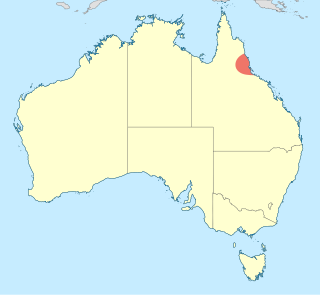
Griseargiolestes metallicus is a species of Australian damselfly in the family Megapodagrionidae, commonly known as a metallic flatwing. It has only been recorded from rainforests in the vicinity of Tully Gorge National Park in northern Queensland, where it inhabits streams.
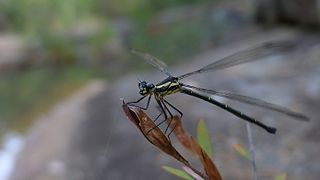
Griseargiolestes eboracus is a species of Australian damselfly in the family Megapodagrionidae, commonly known as a grey-chested flatwing. It is endemic to eastern Australia, where it inhabits bogs.

Griseargiolestes intermedius is a species of Australian damselfly in the family Megapodagrionidae, commonly known as an alpine flatwing. It is endemic to alpine areas of Victoria and New South Wales, where it inhabits bogs and seepages.
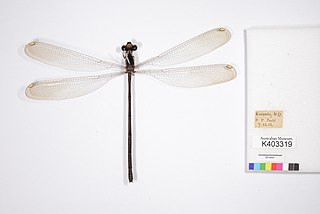
Podopteryx selysi is a species of Australian damselfly in the family Megapodagrionidae, commonly known as a treehole flatwing. It can be found in coastal northern Australia and New Guinea, where its larvae live in water-filled holes in tree trunks in rainforest.

Nososticta pilbara is a species of Australian damselfly in the family Platycnemididae, commonly known as a Pilbara threadtail. It has only been found in the Pilbara region of Western Australia, where it inhabits streams and pools.
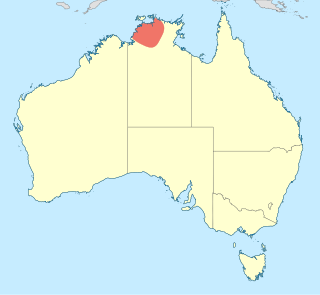
Nososticta baroalba is a species of Australian damselfly in the family Platycnemididae, commonly known as a black-winged threadtail. It has only been found in the Northern Territory, where it inhabits streams.
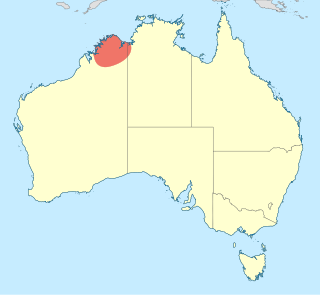
Nososticta kalumburu is a species of Australian damselfly in the family Platycnemididae, commonly known as a spot-winged threadtail. It has only been found in the Kimberley region of Western Australia, where it inhabits streams.

Nososticta koolpinyah is a species of Australian damselfly in the family Platycnemididae, commonly known as a Koolpinyah threadtail. It has only been found in the vicinity of Darwin and on Melville Island in Northern Territory, where it inhabits streams.

Nososticta koongarra is a species of Australian damselfly in the family Platycnemididae, commonly known as a citrine threadtail. It has only been found on the Arnhem Land escarpment in Northern Territory, where it inhabits streams.
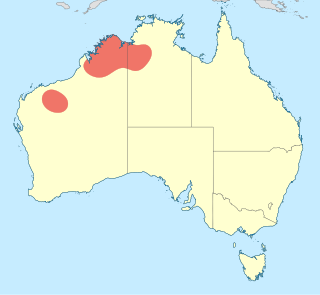
Nososticta liveringa is a species of Australian damselfly in the family Platycnemididae, commonly known as a malachite threadtail. It is endemic to northern Western Australia and western Northern Territory, where it inhabits streams and lagoons.

Nososticta taracumbi is a species of Australian damselfly in the family Platycnemididae, commonly known as a Melville Island threadtail. It is endemic to Melville Island, Northern Territory, where it inhabits streams.

Episynlestes cristatus is a species of Australian damselfly in the family Synlestidae, commonly known as a tropical whitetip. It is endemic to north-eastern Queensland, where it inhabits streams in rainforest.

Synlestes tropicus is a species of Australian damselfly in the family Synlestidae, commonly known as a tropical needle. It is endemic to north-eastern Queensland, where it inhabits streams in rainforests.
























